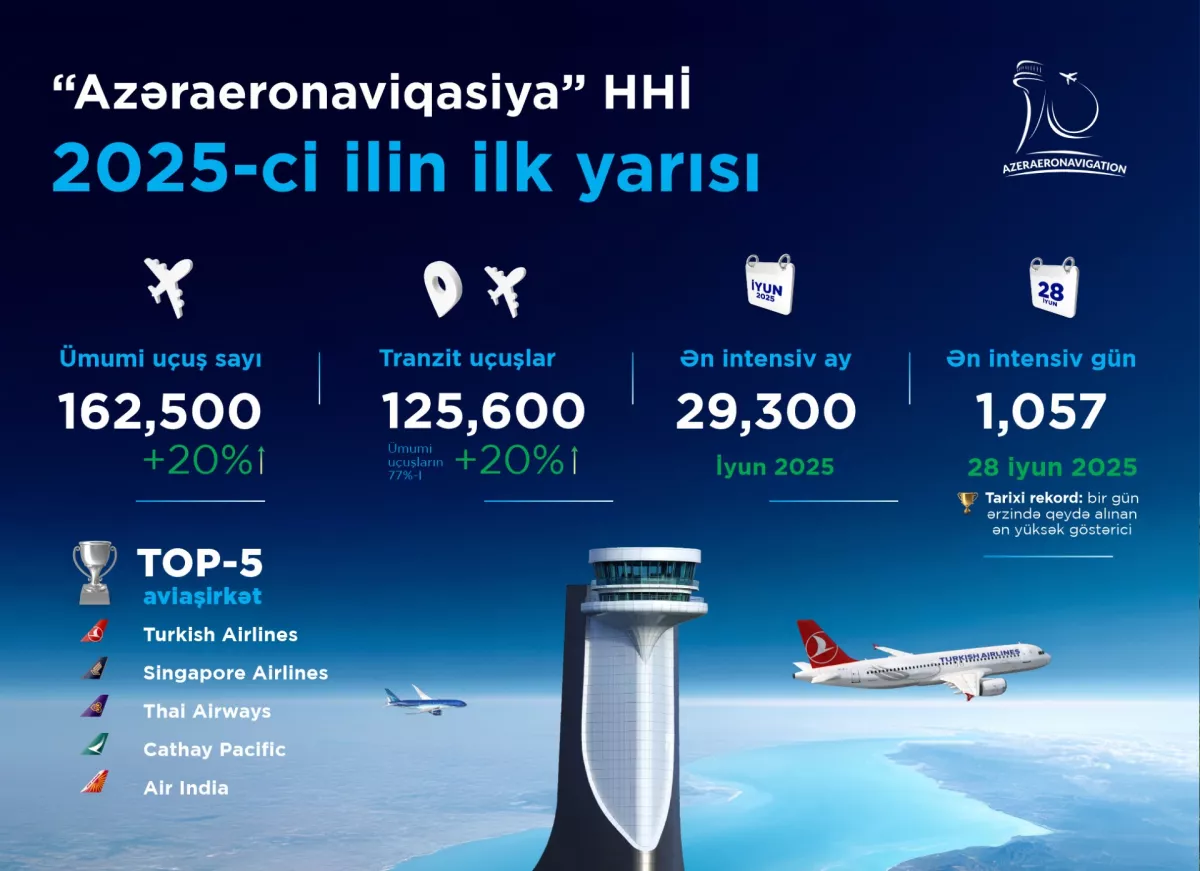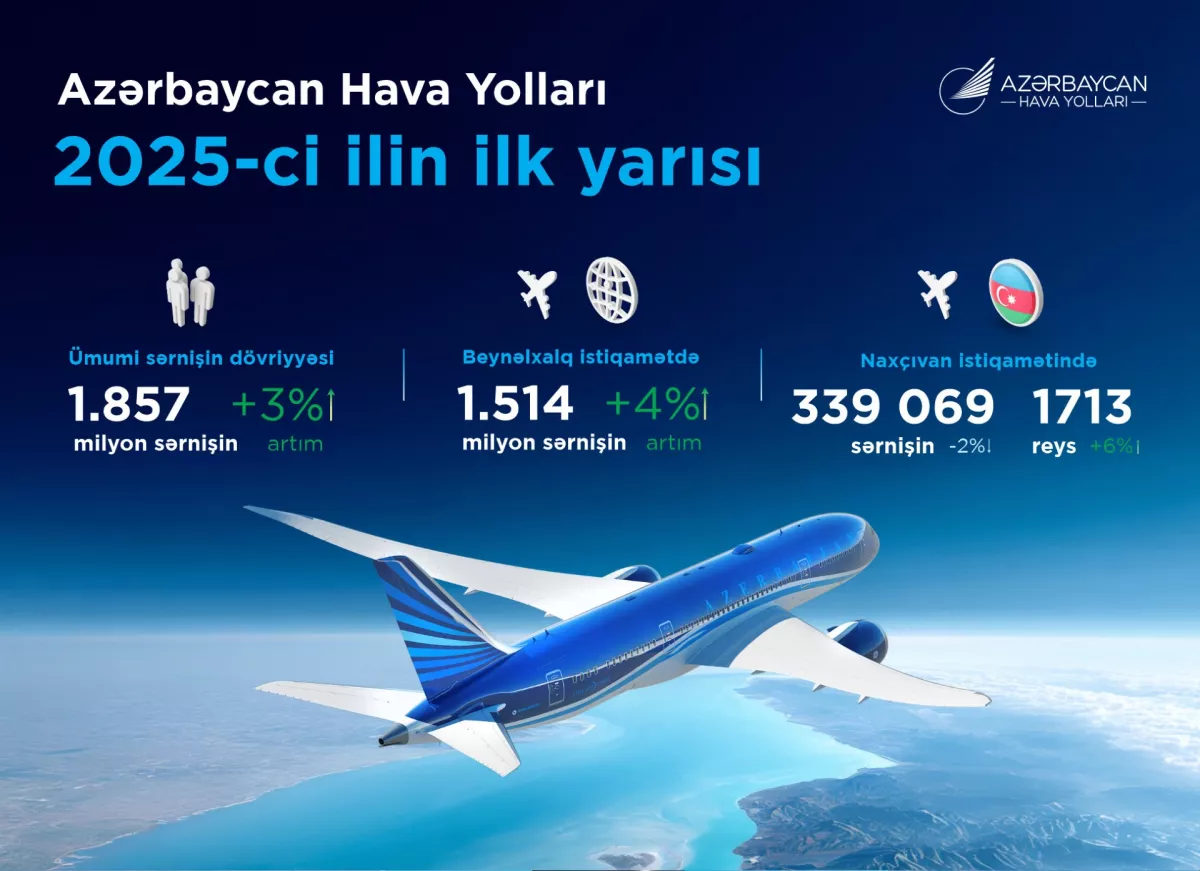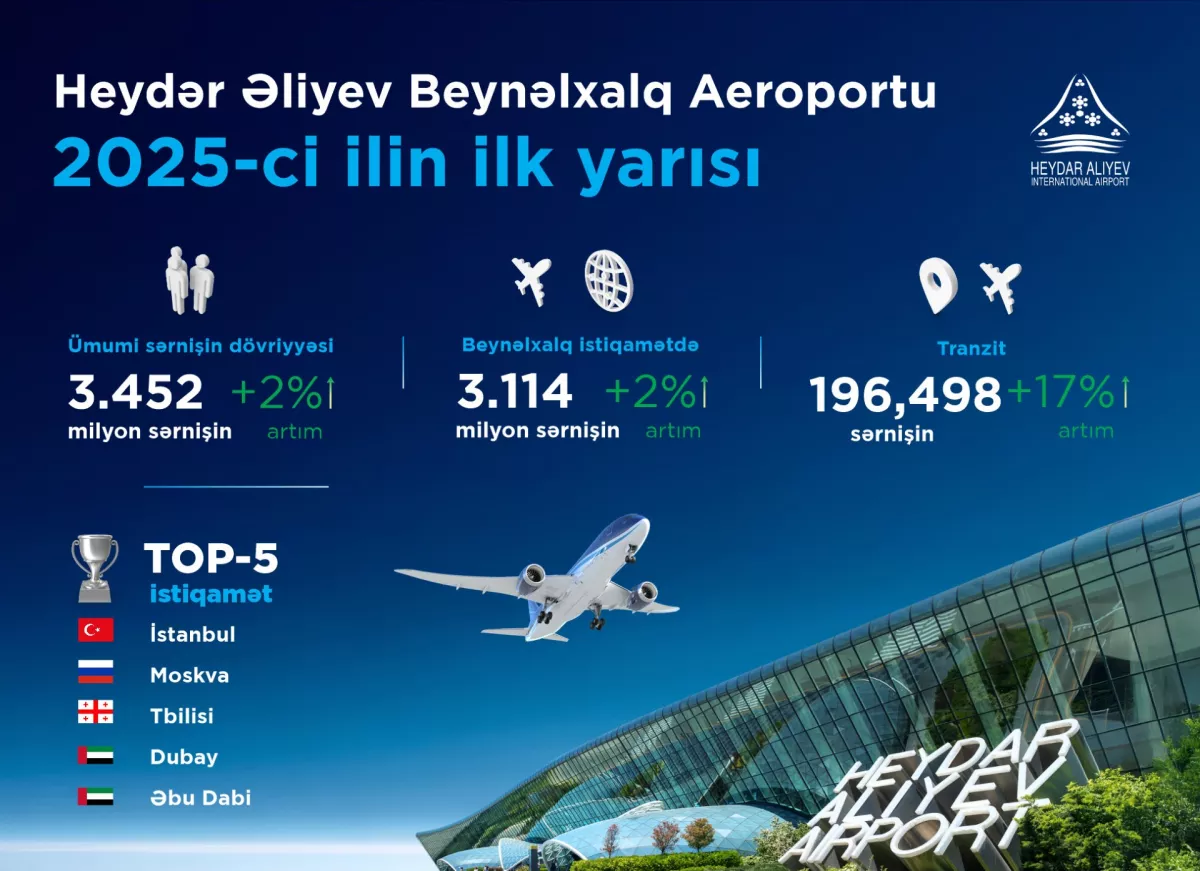Azerbaijan’s aviation sector reports record performance Since the start of 2025
The first half of 2025 has proven to be a statistically and strategically significant period for Azerbaijan’s aviation sector.
Increased flight activity, growing transit traffic, and a steady rise in passenger transportation have further strengthened the country’s position in the global aviation system, the Heydar Aliyev International Airport told Caliber.Az.

From January to June 2025, “Azeraeronavigation” Air Traffic Control (ATC) serviced more than 162,500 flights in Azerbaijan’s airspace — a 20% increase compared to the same period in 2024, when 135,500 flights were recorded. Of these, 77% (125,600 flights) were transit flights. A 28% growth in transit traffic once again confirms Azerbaijan's airspace as a reliable and efficient aviation corridor between Europe and Asia.
Among the international airlines flying most frequently over Azerbaijani territory are Turkish Airlines, Singapore Airlines, Thai Airways, Cathay Pacific, and Air India.
A historic record was set in June: 29,300 flights in one month, and on June 28, a daily record of 1,057 flights — the highest single-day figure in the history of Azerbaijan’s civil aviation.

In the first half of 2025, Heydar Aliyev International Airport handled 3,452,000 passengers, marking a 2% increase compared to 3,388,000 passengers during the same period in 2024. Over this period, 39 airlines, including 16 low-cost carriers, operated a total of 27,091 flights.
International passengers numbered 3,114,000, with 51% of this traffic carried by foreign airlines. The airport maintained direct flights to 34 countries and 69 cities. Transit passenger traffic also showed positive growth, increasing by 17% to reach 196,498 passengers.

The most popular international destinations were Istanbul, Moscow, Tbilisi, Dubai, and Abu Dhabi. Azerbaijan’s national carrier, Azerbaijan Airlines (AZAL), transported 1,857,000 passengers in the first half of 2025 — a 3% increase compared to 1,811,000 passengers during the same period in 2024. Of these, 1,514,000 passengers flew on international routes, reflecting a 4% year-on-year growth.
On domestic routes, particularly the Baku–Nakhchivan–Baku route, 1,713 flights were operated, carrying over 339,000 passengers. Despite a 2% decline in passenger numbers, the number of flights increased by 6%, indicating flexible and adaptive route management in response to demand.
These results from the first half of 2025 confirm the resilience, adaptability, and strong potential for international integration of Azerbaijan’s aviation sector. The emerging dynamics open important strategic opportunities for digital transformation, next-generation logistics solutions, and expanded international cooperation in the coming period.
By Timur Rzayev








